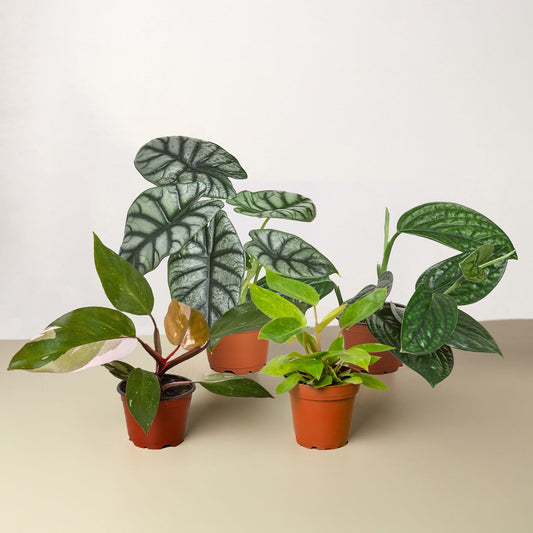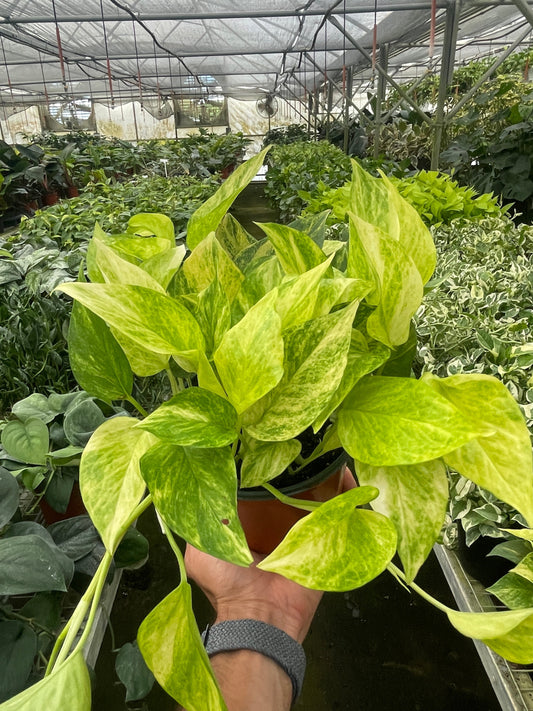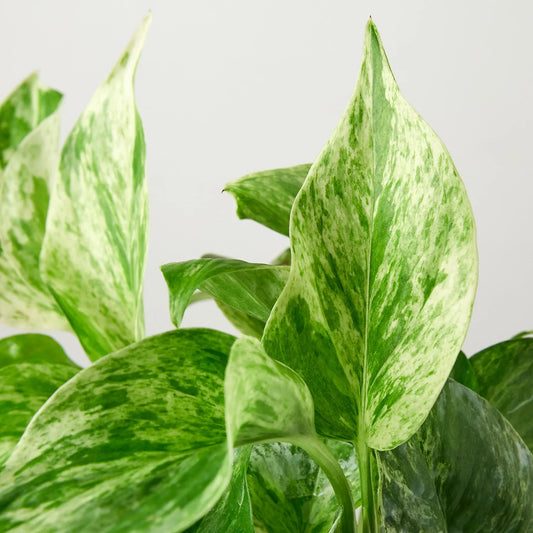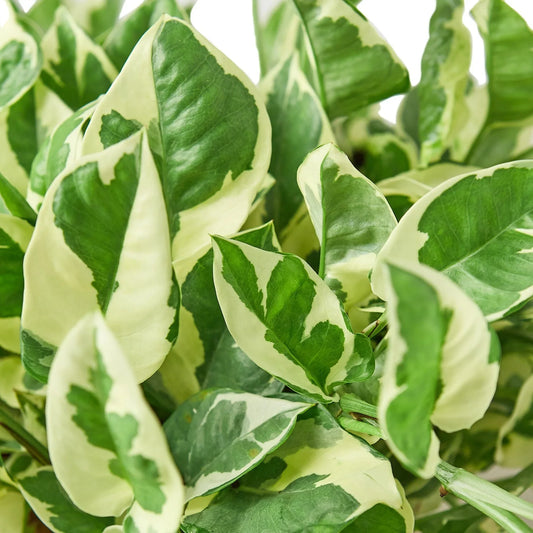Why Are My Bush Lily's Leaves Drooping?
Cafe Planta Team
Is your Bush Lily looking a bit under the weather with drooping leaves? It can be quite a puzzle, especially when everything seemed fine just the other day. Don’t worry too much—this is a common issue that many plant lovers face, and it often has a simple explanation.
In this article, we’ll uncover the possible reasons why your Bush Lily’s leaves might be drooping and provide practical solutions to help you nurse it back to health. From watering habits to lighting conditions, we’ll cover it all. Let’s get your Bush Lily standing tall again!
Watering Woes: Too Much or Too Little?
One of the most common reasons for drooping leaves is improper watering. Bush Lilies, like many houseplants, are quite particular about their water needs. Get it wrong, and they’ll let you know by wilting. Let’s take a closer look at how you can perfect your watering routine.
First things first, how often are you watering your Bush Lily? If you’re not sure, try sticking your finger into the soil about an inch deep. If it feels dry, it’s time to water. If it’s still moist, hold off. Bush Lilies prefer their soil to dry out a bit between waterings.
- Overwatering: This is the number one culprit of droopy leaves. When there's too much water, the roots can’t breathe, leading to root rot. Signs include yellowing leaves and mushy roots.
- Underwatering: On the flip side, too little water makes the plant dehydrated, causing leaves to droop. You might notice the soil pulling away from the pot edges.
So, how do you strike the right balance? A consistent watering schedule helps. Water when the top inch of soil feels dry, and always ensure proper drainage by using pots with holes at the bottom.
Lighting Conditions: Too Much Sun or Not Enough?
Light is another critical factor for your Bush Lily’s health. These lovely plants thrive in bright, indirect light. But what does that mean, exactly? Let’s break it down.
Bright, indirect light means your plant is getting plenty of light, but it’s not sitting in direct sunlight, which can scorch the leaves. Imagine sitting by a sunny window with sheer curtains—the light is there, but it’s soft and diffused.
- Too Much Sun: If your Bush Lily is in direct sunlight, you might see scorched or faded leaves. The plant will also become stressed, leading to drooping.
- Too Little Light: On the other hand, if it’s in a dim corner, it might not be getting enough energy to maintain its leaf structure, causing them to droop.
Finding the right spot can be tricky, but once you do, your Bush Lily will thank you by perking up its leaves and possibly even blooming.
Temperature and Humidity: Finding the Sweet Spot
Bush Lilies hail from South Africa, where the climate is relatively warm and humid. While they’re adaptable, sudden temperature swings or persistently low humidity can cause distress.
Here are a few things to keep in mind:
- Temperature: Keep your Bush Lily in a room that’s consistently between 60°F and 75°F. Avoid placing it near drafty windows or heat sources like radiators.
- Humidity: These plants prefer moderate humidity. If your home is particularly dry, especially in winter, consider using a humidifier or placing a tray of water near your plant.
Think of your Bush Lily as someone who loves a cozy, stable environment. Too much fluctuation, and it’ll definitely show its displeasure with drooping leaves.
Nutrient Deficiencies: Is Your Plant Hungry?
Just like us, plants need their nutrients to grow strong and healthy. If your Bush Lily isn’t getting enough food, it might droop as a cry for help.
Bush Lilies don’t need a lot of fertilizer, but during the growing season (spring and summer), a balanced liquid fertilizer every month can do wonders. Stick to the label instructions to avoid over-fertilizing, which can be just as harmful.
Signs of nutrient deficiencies include:
- Pale Leaves: Lack of nitrogen often leads to yellowing leaves.
- Stunted Growth: If your plant isn’t growing or looks weak, it might be missing essential nutrients like phosphorus or potassium.
Feeding your Bush Lily a well-balanced diet will keep it robust and less likely to droop.
Pest Problems: Tiny Intruders at Work
Sometimes, drooping leaves aren’t about what you’re doing but what’s doing your plant. Pests like spider mites, aphids, and mealybugs love houseplants and can wreak havoc if not dealt with promptly.
To spot these pesky invaders, inspect your plant closely. Some signs include:
- Webbing: Spider mites leave tiny web-like structures.
- Sticky Residue: Aphids and mealybugs excrete a sticky substance known as honeydew.
- Visible Bugs: Sometimes you’ll see the critters themselves—look under leaves and along stems.
If you find pests, don’t panic. You can treat them with insecticidal soap or neem oil. Regularly wiping leaves with a damp cloth can also help keep them at bay.
Repotting Stress: Is It Time for a New Home?
Plants outgrow their pots over time, and if your Bush Lily’s roots are cramped, it might start to express its discomfort through drooping. Check if the roots are circling the pot or emerging from the drainage holes. If so, it’s time for a bigger home.
When repotting:
- Choose the Right Pot: Pick a pot that’s only slightly larger than the current one. Too big, and you risk overwatering.
- Fresh Soil: Use a well-draining potting mix to give the roots room to breathe.
- Gentle Transition: Handle the roots carefully and water the plant after repotting to help it settle in.
Repotting can be stressful for a plant, but it’s often necessary for continued growth and health.
Natural Aging: When Drooping Is Normal
Sometimes, drooping leaves are just part of the plant’s natural lifecycle. Older leaves, especially the lower ones, will eventually die off as new growth appears.
If your plant is otherwise healthy and producing new leaves, a bit of drooping here and there might be nothing to worry about. Simply trim away the old leaves to keep your Bush Lily looking its best.
This natural process is a reminder that even in the plant world, growth involves letting go of the old to make way for the new.
Soil Issues: The Foundation of Plant Health
The soil your Bush Lily is planted in plays a huge role in its overall health. Poor soil can lead to a host of problems, including drooping leaves.
What makes soil unsuitable?
- Poor Drainage: Soil that retains too much water can suffocate roots and cause rot.
- Lack of Aeration: Compacted soil doesn’t allow roots to breathe or grow properly.
To ensure your soil is up to par, consider repotting your Bush Lily every couple of years to refresh the soil. Choose a well-draining mix, often labeled for indoor plants or specific to Bush Lilies, to keep your plant thriving.
Final Thoughts
Drooping leaves on your Bush Lily can be a bit concerning, but by checking factors like water, light, and pests, there’s a good chance you’ll pinpoint the problem. With a little attention and care, your plant will likely bounce back in no time.
At Cafe Planta, we’re passionate about helping you create a thriving plant collection. If you have any questions or need advice on plant care, feel free to reach out to us via email or send us a message on Instagram. We’re here to share our love of plants and help you connect with nature in your home.



















